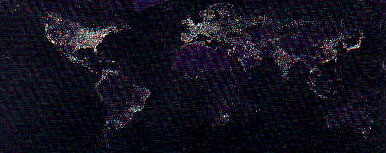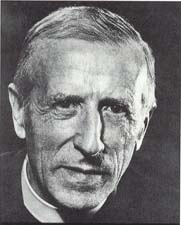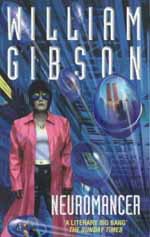
Contents of this page: |
Contents of other page: |
Note that this page uses the same style sheet as the first page. Click here to view it.
Although it seems accurate to say that life on Earth has participated in the "construction" of the planet and therefore of its own environment, it is of course difficult to conceive of this construction having been directed. (For the benefit of those who would like to consider the Earth and the Universe as being the product of divine Creation, I do not think the Big Bang theory in any way removes the possibility of such a Creator, but I don't accept that there has been active intervention since.) At least, that is, until the present epoch, following the emergence of one particular species, Homo sapiens.
Humanity is conscious of itself and its actions. And as early as 1864, George Perkins Marsh recognised the existence of "anthropogenic", or human-caused changes to the world's global environment: in other words, the four intersecting spheres that we have mentioned so far (see the Samson and Pitt book listed in the references). With the discovery of environmental damage such as the hole in the ozone layer and global warming, it is now hard to deny that humanity alone is a force for change on a global, geological scale. And just as alien astronomers could point their telescopes at Earth and detect the existence of its biosphere (through spectroscopy, which would reveal the presence of organic compounds, water vapour and free oxygen in the atmosphere: sure signs of biological activity), so they might be able to detect the existence of thinking life. No alien - as far as we know! - is near enough to see even part of the compound image below, but they may be able to detect radio waves, television pictures and so on, some of which have now reached many light years beyond the Solar System.

The development of human consciousness, as a biological phenomenon, is still mostly a mystery, but its existence in the present day is an inescapable fact. And due to its ability to manipulate the environment in ways that transcend the powerful, but ponderous genetic processes of the biosphere, human consciousness has been treated by some writers as the fifth of the Earth's spheres - the noösphere.
Humanity communicates, and through that communication, the global environment is changed. And to appreciate the communication of other people in even the most basic fashion, we need to do so with reference to an underlying "sphere" of assumptions, culture, language and memories. Interacting with other people is not just a matter of hearing sounds, reading marks on a page/screen or watching non-verbal actions, but being able to place all these "signs" in some kind of context.
 | This realm of human social relations and knowledge has been termed the noösphere. (Pronounce it something like "noah-sphere", rather than "noo-sphere" as if it rhymed with "zoo".) The most famous proponent of this idea was a Jesuit priest, Pierre Teilhard de Chardin (pictured left). Effectively, he believed that what was emerging through human communication was a kind of global mind. There is no space on this page to go into the rights and wrongs of this position - Teilhard has been strongly criticised, and it's true that his main work (The Phenomenon of Man) is almost wilfully obscure. But the basic idea is difficult to refute. |
How else is it possible to think about human culture, considered as a whole? Where does, for instance, a famous piece of art like the Mona Lisa "live"? Just in the Louvre? What of all the reproductions, the postcards, and people's memories? What of the different connotations it has for different people? It is simply impossible to say that the thing we call "the Mona Lisa" exists only in the physical spheres. It has to have a cultural existence as well - in the noösphere.
Teilhard believed that all human minds contributed to this sphere, just as all organisms (including humans) contributed to the biosphere. Whenever knowledge was produced, the noösphere was changed. de Chardin was very optimistic about the potential of the noösphere to lead humanity towards a Utopian future, but others are not so confident that all additions to the noösphere are beneficial. In any case, it seems true to say that from within the noösphere we need to find some solutions to environmental crises if it is not to irreparably damage the other four spheres of the Earth.
| The term "cyberspace" was invented by the author William Gibson in his 1984 book, Neuromancer (right). In the book it referred to a sort of permanent virtual reality into which the protagonists could retreat and maintain separate identities and lives. Following the novel's publication the term was enthusiastically adopted by devotees of the emerging global computer communications infrastructure we know today as the Internet; on which you are reading these words. But what actually is "cyberspace"? Where is it? |  |
The important thing is, "cyberspace" - the idea of an intangible realm of information existing alongside the "real", physical world - isn't new. It's simply the noösphere in a different guise. What computers and IT give us is an improved conduit to an informational realm that has been there ever since people first started talking to each other. IT breaks down some remaining physical barriers to accessing the noösphere (such as wanting to access a text but not being near a library which carries it), but there's nothing new going on here. All the problems that exist in the world "outside" will inevitably be reflected in cyberspace, and may even be exacerbated by it. Those who believe that the Internet will "solve" the world's problems are being rather naïve.
You don't have to agree with Teilhard de Chardin's spiritualist projection of the future of the noösphere to start to think of it as a definite phase in the evolution of Earth. And the emergence of the Internet is itself a phase in the evolution of the noösphere, one that will have particular consequences - consequences that remain to be fully seen. But this does not mean that all the impacts of human activity and the Net are going to be beneficial, simply because they can, from one point of view, seem "natural". Catastrophic changes to the Earth's spheres have occurred throughout geological time, and some of these catastrophes have come about through "natural" causes. As "Earth's evolution become conscious of itself" (from Julian Huxley's introduction to The Phenomenon of Man), the Earth's spheres have, for the first time, gained an ability to retard these "natural" changes. Is, then, the noösphere to be part of the problem, or part of the solution? That's up to us - and every human being alive is part of the question.
Dobzhansky, Theodosius (1956): The Biological Basis of Human Freedom, New York: Columbia University Press. (Another author who tried to investigate human culture through its links to biology, within a liberal political framework.)
Teilhard de Chardin, Pierre (1959): The Phenomenon of Man, London: Collins.
Medawar, Peter B. (1961): The phenomenon of man, Mind 70, pp. 99-106. (Famous and vituperative critique of the aforementioned, reprinted in the collection below.)
Samson, Paul R. and David Pitt, eds. (1999): The Biosphere and Noösphere Reader: Global environment, society and change, London, Routledge. (Very good collection of essays related to both the pages of this site.)
Academic paper by this web page's author (requires Adobe Acrobat)
Most stuff on the Web about Teilhard is incomprehensible guff, but this is a reasonable, short essay
Click here to read the first page
The text and code of this page is © Drew Whitworth 2002. The author asserts his moral rights.